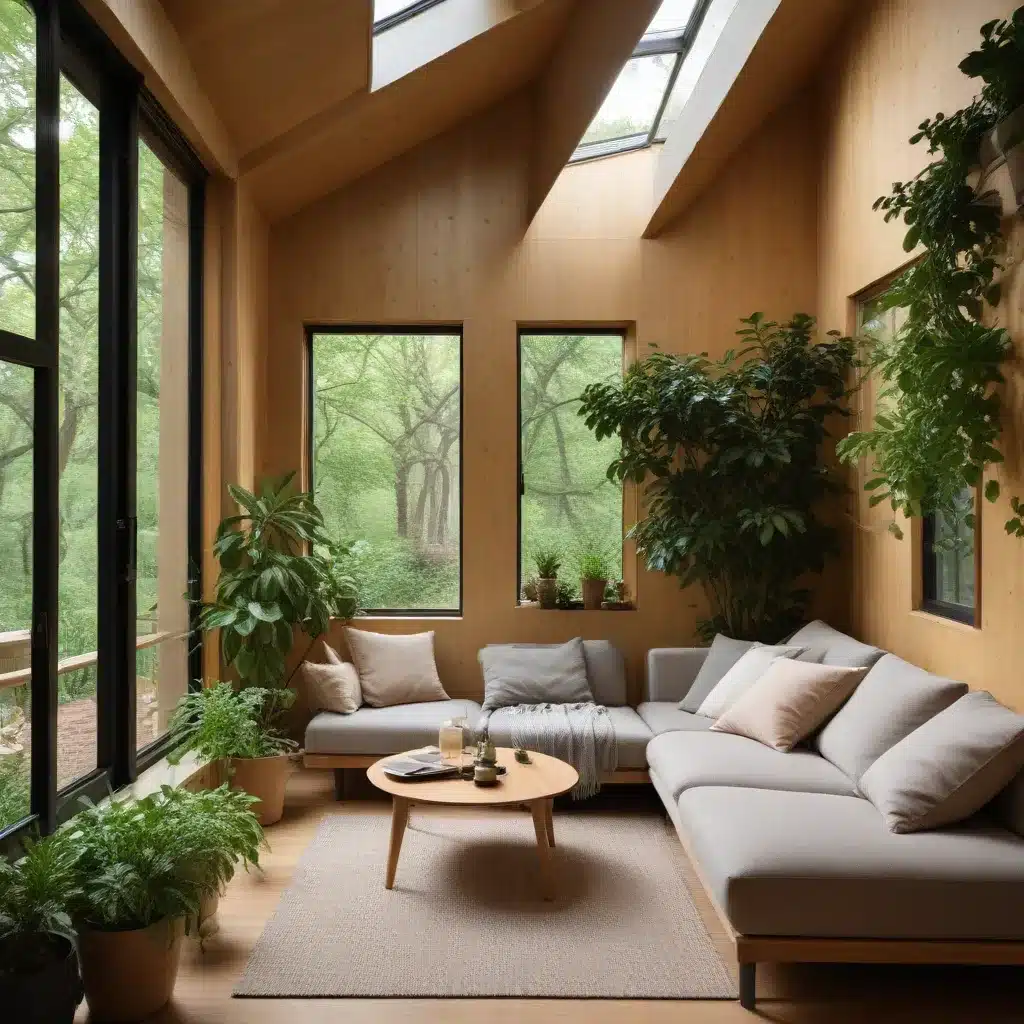
As an experienced home improvement consultant, I’m excited to share insights on biophilic design – an approach that seamlessly integrates nature into our living spaces. This design philosophy is particularly well-suited for compact homes, where every square foot counts. By strategically incorporating natural elements, you can create a cozy, restorative haven that feels spacious and serene.
Fundamentals of Biophilic Design
Defining Biophilic Design
Biophilic design is the practice of connecting people with nature within the built environment. It draws upon our innate biophilia – the human tendency to seek connections with the natural world. This design approach aims to satisfy our inherent need for natural stimuli, such as daylight, greenery, natural textures, and soothing sounds.
Principles of Biophilic Design
The core principles of biophilic design include:
- Visual Connection with Nature: Incorporating natural views, patterns, and materials to stimulate the senses.
- Non-Visual Connection with Nature: Engaging the other senses through scents, sounds, and textures inspired by nature.
- Naturalistic Shapes and Forms: Mimicking organic shapes, curves, and fractals found in the natural world.
- Material Connection with Nature: Using natural, locally-sourced, and sustainably-produced materials.
- Complexity and Order: Balancing the complexity of natural patterns with a sense of order and calmness.
Benefits of Biophilic Design
Embracing biophilic design offers numerous advantages for compact home dwellers:
- Improved Wellbeing: Exposure to nature has been linked to reduced stress, enhanced cognitive function, and better physical health.
- Increased Productivity: Biophilic elements can boost focus, creativity, and task engagement.
- Enhanced Comfort and Relaxation: Connecting with natural elements fosters a sense of coziness and tranquility.
- Sustainable Living: Biophilic design often incorporates eco-friendly materials and strategies, promoting a more sustainable lifestyle.
Biophilic Elements for Compact Homes
Natural Lighting and Ventilation
Maximizing natural light and airflow is a cornerstone of biophilic design. In compact homes, strategically placed windows, skylights, and operable windows can flood spaces with sun-drenched illumination and promote natural cross-ventilation. This not only enhances the connection to the outdoors but also reduces the need for artificial lighting and mechanical cooling, making your home more energy-efficient.
Incorporation of Greenery
Bringing the outdoors in through living plants is a powerful biophilic technique. Whether it’s a lush indoor living wall, potted succulents, or a small herb garden, the presence of greenery can instantly infuse a space with vitality and a sense of tranquility. When selecting plants, opt for low-maintenance, air-purifying varieties that thrive in the available light and space.
Biophilic Textures and Materials
Incorporating natural textures and materials is essential for creating a cozy, biophilic aesthetic. Think warm wood tones, woven textiles, stone, and natural fiber accents. These elements not only add visual interest but also foster a tactile connection with the natural world. When possible, prioritize locally-sourced, sustainably-produced, and VOC-free materials to align with your eco-friendly goals.
Spatial Considerations in Compact Homes
Maximizing Functional Space
In a compact home, thoughtful space planning is crucial. Incorporate multifunctional furniture and built-in storage solutions to optimize every square foot. Strategically place area rugs, pendant lights, and other design elements to define distinct zones within the open floor plan, creating a sense of flow and functionality.
Multifunctional Furniture
Invest in versatile, space-saving furniture that serves multiple purposes. For example, a daybed can double as a sofa and a guest bed, while a storage ottoman provides extra seating and hidden storage. By carefully selecting multifunctional pieces, you can maintain the open, airy feel of your compact home while maximizing its utility.
Zoning and Flow
Divide your compact home into distinct yet cohesive zones, such as a living area, a work nook, and a relaxation corner. Use area rugs, furniture arrangements, and lighting to define these zones and create a sense of flow. This not only enhances the functionality of your space but also contributes to the overall biophilic aesthetic by allowing natural elements to permeate throughout.
Biophilic Design Strategies for Coziness
Enhancing Sensory Experiences
Engage all the senses to create a truly immersive biophilic experience. Incorporate natural sounds, such as a tabletop water feature or wind chimes, to soothe the mind. Strategically place essential oil diffusers to infuse the air with calming, nature-inspired scents. Encourage tactile exploration by including natural fiber textiles, rough-hewn wood, or smooth river stones within your decor.
Promoting Relaxation and Restoration
Biophilic design has a remarkable ability to foster a sense of calm and rejuvenation. Incorporate cozy seating areas, plush throws, and soft lighting to create a sanctuary-like atmosphere. Position a reading nook or meditation corner near a window, allowing you to gaze upon the natural world while indulging in moments of tranquility.
Fostering Connection to Nature
Ultimately, the goal of biophilic design is to strengthen the bond between the built environment and the natural world. Curate a connection to the outdoors through strategic placement of framed nature photography, live-edge wood furnishings, or botanical-inspired wall art. By weaving these elements throughout your compact home, you’ll cultivate a sense of grounding and belonging that extends beyond your four walls.
Embracing biophilic design in your compact home can be a transformative experience, imbuing your living spaces with a sense of warmth, serenity, and well-being. By thoughtfully incorporating natural elements, you can create a cozy, restorative haven that nurtures your mind, body, and spirit. To learn more about biophilic design and other sustainable home improvement strategies, visit Reluctant Renovator.



